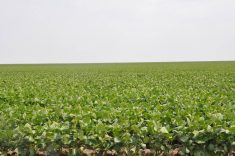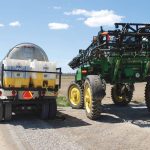As the Saskatchewan agriculture department gears up to deliver another BSE-related compensation program, officials are still processing applications to earlier programs.
Financial programs director Dave Boehm said last week he had few details on the new cull compensation program even though the department would be administering it.
“We have an idea of what we think will happen,” he said Nov. 21. “We have no details yet.”
The province will spend $7-$10 million for its share of the new program. Meanwhile, it continues to make payments under several others.
Read Also

Extreme rain increases as planet warms
In this issue, we are going to wrap up our look at extreme rainfall by examining the different weather patterns that tend to be associated with these rainfall events.
The $520 million federal-provincial bovine spongiform encephalopathy recovery program, the first to be announced last summer after the single case of BSE closed markets to Canadian beef and cattle, wound down in late August.
Boehm said the 1,668 Saskatchewan producers who applied received a total of $29 million. No payments have yet been made under the second component, which was a packer incentive to help move cuts that are more difficult to market.
Money available for that part of the program was dependent on what was left after the first payments were made.
“Those payments will be prorated to stay within budget,” said Boehm.
Most of the Saskatchewan payments to producers under the first component were made for slaughter steers and heifers. A total of 48,053 slaughter animals generated payments of $26.2 million. Payments were also made for cows, bulls, bison, deer and elk, lamb and mutton.
The second program was a set-aside plan funded solely by the province.
“We had 121 applications received and paid, and we paid out $4.4 million,” said Boehm. “That covered about 7,900 animals.”
The department had aimed for 10,000 animals and cut off applications when the number hit 10,450. However, officials discovered Albertans owned about 2,500 of those animals and were feeding them in Saskatchewan.
“It wasn’t our intent to lowball the program.”
The Saskatchewan Fed Livestock Competitive Market Adjustment Program had registered 1,350 producers by Nov. 21. Some of those could be the same people, Boehm said, because they have to register before they sell cattle but may not sell them all at that time.
About $4 million has been paid so far under this program. More than 70,000 animals including cattle, bison, cervids, lambs and goats have been registered. Producers have until Dec. 17 to register animals and until Dec. 19 to sell them. They must be slaughtered by Jan. 5. There was also a non-slaughter sale component to the program, offered as a way to get more buyers into the market.
The province also guaranteed loans for breeding stock, backgrounders and calves.
Financial institutions are processing those now and about 100 are being approved each week. Boehm said the department received 844 applications as of last week. The loans totalled $12.2 million, for an average of $14,400.
The breeding stock loans are worth $80 per head, and must be repaid by Jan. 31, 2008. The backgrounder cash advance for cattle is $200 per head, repayable when the animal is sold. The calf program is also a cash advance, worth $60 per ruminant animal.
The deadline for the program is Jan. 30.















